Below are some mid-19th century/Civil War era fashions. If you have a particular look or garment in mind, all we need is a good description and a drawing or picture to re-create it for you.
Ball Gowns
Evening wear of the Civil War period was often spectacular. Fabrics included luxurious silks, fine wools, and sheer cottons. Often less decoration and finer fabrics with fewer trims or embellishments were used to communicate the wearer’s taste, fashion sense, and status. Still, the Victorians were noted for their design excesses and often indulged in color and an abundance of ribbons, laces, and sundry furbelows.
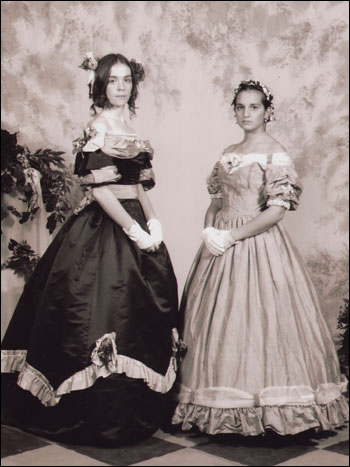
The two ball gowns (below) emulate styles from Godey’s. The lavender and black is inspired by an 1865 plate and the ivory gown with black trim is from an 1864 image. Jason sports a fine silk vest.
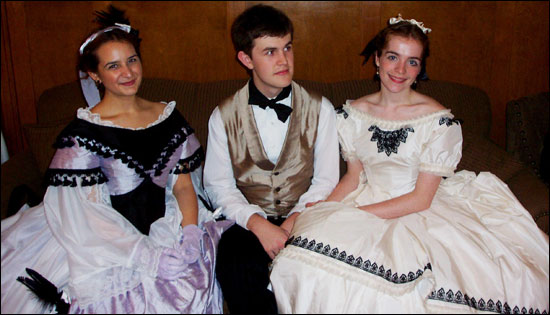
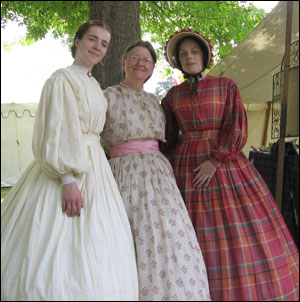
Day Wear
During the summer, one might comfortably wear lighter-weight dresses. Below, three lightweight summer dresses are known as “sheer dresses” and were perfectly respectable, acceptable day wear for ladies in the mid-19th century. These early 1860’s dresses are all made of cotton, although some were made of lightweight pineapple cloth, made from pineapple leaf fibers. These dresses feature a partial lining that echoes the wide neckline of an 1860’s chemise and are made of semi-sheer cotton with large, loose gathered bishop sleeves to help us stay cool on hot summer days.

Here Kelly models a simple 1860’s day dress in a lightweight worsted wool, a material typical of smooth-front dresses during the Civil War years. The dress is plain but is accessorized for going out with a bonnet and fresh white collar and cuffs, a necessary addition to any dress during the mid-19th century.
Her silk and silk-trimmed bonnet is a late 1850’s style with a large crown. Sleeping Brenna wears white baby clothes—a long white dress with white cap and underthings.
At right, a group of ladies picnic under the filbert trees in cotton day dresses.
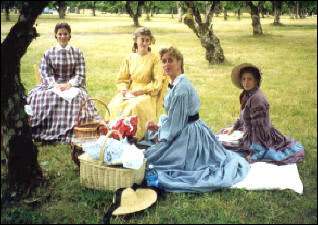
“Sunday Best”
Even a person of moderate means kept at least one special dress for church, visiting and special occasions. Below, I am modeling my “Sunday Best” dress on a porch at Fort Vancouver National Historic Area. The dress is copied from an 1867 original, which was made of black silk taffeta. I am wearing it with a lace day cap. We were there to present a program, “Fashion Foundations,” for the Northwest Civil War Council’s School of the Reenactor.
Inside the beautifully restored building, my three models show their Sunday dresses: a pink striped dress with velvet ribbon trims (copied from a period photograph) and a Medici girdle, a blue silk taffeta ensemble with gold and blue trim, and a pale green cotton lawn dress.
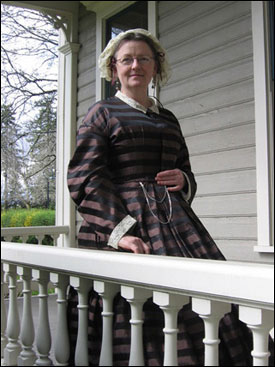
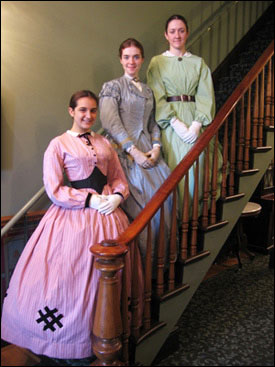
At right, Suzannah models a fashionable plaid dress, circa 1860, with modified bell sleeves and a silk spoon bonnet. Dresses with open sleeves were worn with undersleeves, detachable elasticized sleeves that cover the arms and wrists but only go up to the bicep.
On chilly days at outdoor events such as this Civil War event in May 2010, we add layers like this soft 100% alpaca “heartwarmer” (not a Lavender’s Green creation).
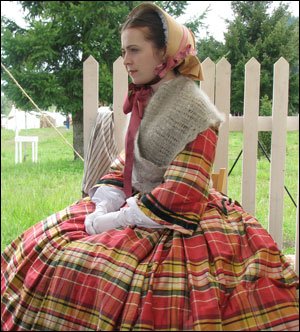
Men’s Attire
Jason, at right, is wearing a more formal combination of dark wool pinstriped trousers and matching vest, with a scarlet silk tie and white dress shirt.
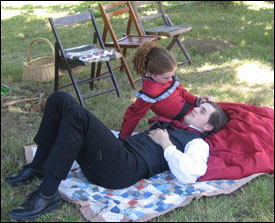
Right, Jason relaxes in the shade on a summer day, although he’s still dressed fully with pants, vest, jacket, tie, and hat. Men could wear brightly plaid, checkered, or print vests in wool or silk if they wanted to dress uniquely.
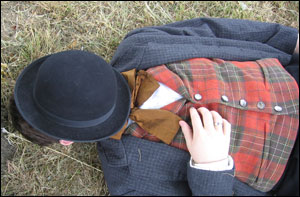
Al (right) wears a Lavender’s Green shirt, cravat, and vest with an antique frock coat while reenacting an 1860 Senator at Champoeg State Park. The silk shawl collar vest is a style typical of the 1850s and early 1860s, the vest being one of the only ways men could follow fashion trends. Men’s clothing styles do not vary as widely as women’s do over the years!
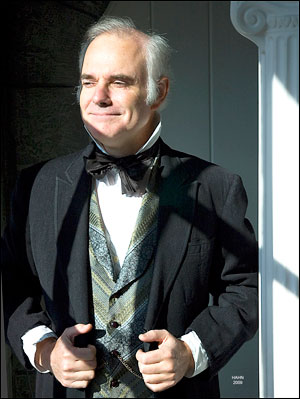
Sportswear
Winslow Homer depicted a new sport in this 1866 painting, The Croquet Game (right) that shows some beautiful “sportswear” options of the time.
Below, we’ve recreated the painting in real life with our young models posing in historically accurate garments based on those worn in the original.
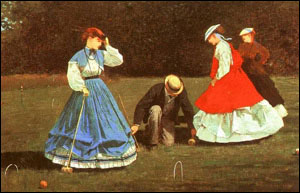
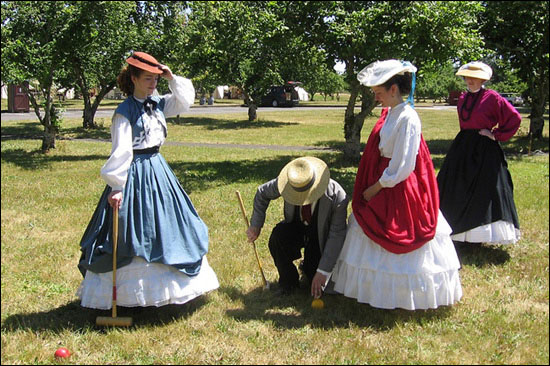
We can custom-make many other beautiful styles for you. Please contact us with your ideas!
